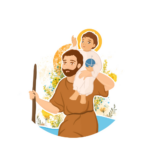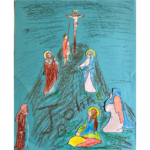
St John the Evangelist is known to be one of the apostles of Jesus. Names in Hebrew all have a meaning and the name John means that God is gracious.
In the life of the apostle John we see that God has been gracious in his extraordinary self-giving love to all humanity. John uses the expression “the beloved disciple” to refer to himself. This expression led to many artists to paint John always very close to Jesus attentive to what Jesus is saying.
In many paintings like that of the last supper and many icons John has his head lying on the heart of Jesus. This was done to show that John hears the way Jesus loves the world. In fact, the way he writes in his gospel shows that he has an intimate knowledge of the heart filled with love of Jesus.

How wonderful it is to be called a beloved disciple and to know Jesus intimately. May we too try to be close to the heart of Jesus and try to do what he asks from us, as St John did. This week we can try to spend time with Jesus in prayer to be close to his heart and pray that we learn to love others as he loves us.
For more videos about the Lenten season, please click here.


















